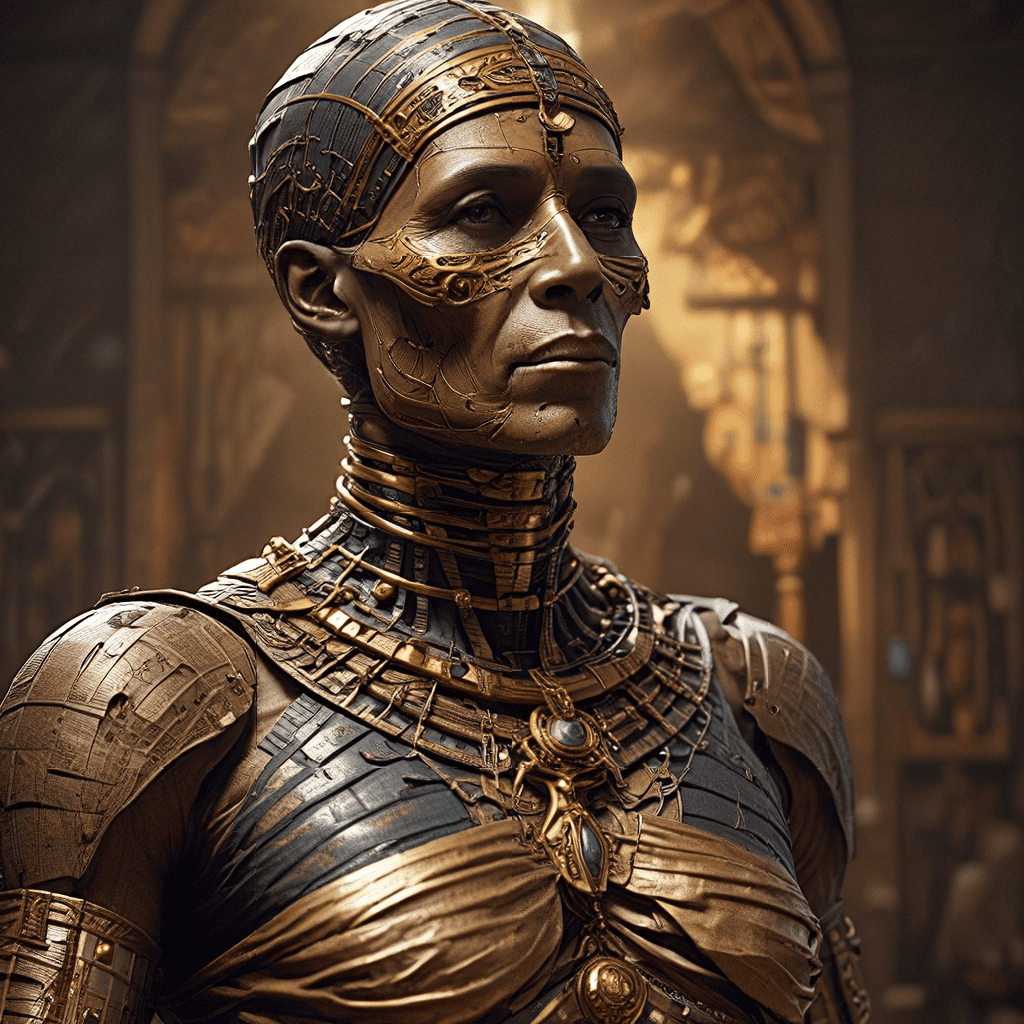1. Introduction: Why Mummify?
Ancient Egyptians believed in life after death. They thought their souls would journey to the afterlife and needed their bodies to return to. To ensure this journey, they preserved their bodies through a complex process called mummification.
The Egyptians believed that the Ka, or life force, and the Ba, or soul, resided in the body. For the Ka and Ba to survive, the body needed to be preserved, allowing the soul to recognize and rejoin it in the afterlife.
2. The Preparation: Getting Ready for Eternity
Mummification began with a ritual washing of the body with wine and water. This was a symbolic cleansing, preparing the body for its afterlife journey. The removal of internal organs, except for the heart, was another important part of the process.
The organs were believed to decay quickly, so they were removed and carefully preserved in special jars called canopic jars. After the removal, the body was covered in a layer of natron salt, a natural desiccant. This process helped dry out the body and prevent decay.
3. The Removal of Internal Organs
The removal of internal organs was a crucial step in the mummification process. The Egyptians believed these organs were less important for the afterlife journey than the heart. The process began with a ceremony called the “Opening of the Mouth.” A priest would use a special tool to open the deceased’s mouth, allowing the spirit to breathe again in the afterlife.
The organs, including the lungs, stomach, intestines, and liver, were then carefully removed and preserved in canopic jars. These jars were decorated with the heads of four gods: Imsety (human), Hapy (baboon), Duamutef (jackal), and Qebehsenuef (falcon). Each god was associated with a specific organ and protected it in the afterlife.
4. The Heart: A Vital Organ
The heart played a significant role in the ancient Egyptian afterlife. They believed the heart was the seat of the soul and would be weighed against a feather in the afterlife. The heart had to be pure and unburdened by evil deeds for the soul to be judged worthy to enter the afterlife.
Unlike the other organs, the heart was not removed during mummification. It was carefully preserved in place, seen as a crucial part of the individual’s identity and spiritual journey.
In the “Weighing of the Heart” ceremony, the heart was weighed against Maat, the goddess of truth and justice. If the heart was lighter than the feather, the deceased would be granted eternal life. If it was heavier, the soul would be devoured by Ammit, the demon of chaos.
5. The Brain: A Less Important Matter
The ancient Egyptians considered the brain less important for the afterlife than the heart. Therefore, it was removed through the nose using special instruments. The brain was then discarded, not preserved, as it was believed to be less significant in the afterlife journey.
The focus in the mummification process was on preserving the heart, the seat of the soul and the key to accessing the afterlife. The brain’s removal and disposal mirrored the importance the Egyptians placed on the heart in their spiritual beliefs.
6. The Drying Process: Dehydration for Eternity
The body, after the removal of its organs, was covered in natron salt, a natural desiccant. This process helped dehydrate the body and prevent decay. The body would remain covered in natron for about 40 days, ensuring it was thoroughly dried.
The dryness was crucial for preservation, preventing the body from rotting and allowing it to last for centuries. This allowed the soul to be reunited with its body in the afterlife and journey to the world beyond.
7. The Wrapping: Protective Layers for the Journey
After the dehydration process, the body was wrapped in layers of linen bandages. These bandages were soaked in resin, a sticky substance that helped to protect the body and keep it together. The wrapping process was intricate, with each bandage meticulously placed.
The Egyptians believed the linen bandages acted as a protective layer for the body, preparing it for the long journey through the afterlife. Amulets, small charms with protective powers, were also placed among the bandages. These amulets were believed to bring luck, protection, and guidance to the deceased on their journey.
8. The Final Touches: A Journey Beyond
Once the wrapping was complete, a plaster mask was often applied to the face, giving the mummy a lifelike appearance. The body was then placed inside a sarcophagus, a coffin made of stone or wood, decorated with intricate carvings and paintings.
The sarcophagus served as a protective tomb, safeguarding the body and its journey to the afterlife. The tomb was also filled with offerings, such as food, jewelry, and tools, which the deceased would need for their journey. The Egyptians believed these offerings would help the soul in the afterlife and provide comfort and guidance.
9. The Afterlife: The Eternal Journey Begins
The mummified body, carefully prepared and preserved, was now ready to embark on its final journey to the afterlife. It would remain in the tomb, awaiting the judgment of Osiris, the god of the underworld. The deceased’s soul would then move on to the world beyond, their journey facilitated by their preserved body.
The mummification process, a complex and meticulous ritual, represented the ancient Egyptians’ deep belief in the afterlife. By preserving their bodies, they hoped to ensure a smooth journey for their souls and a successful transition to the world beyond.




